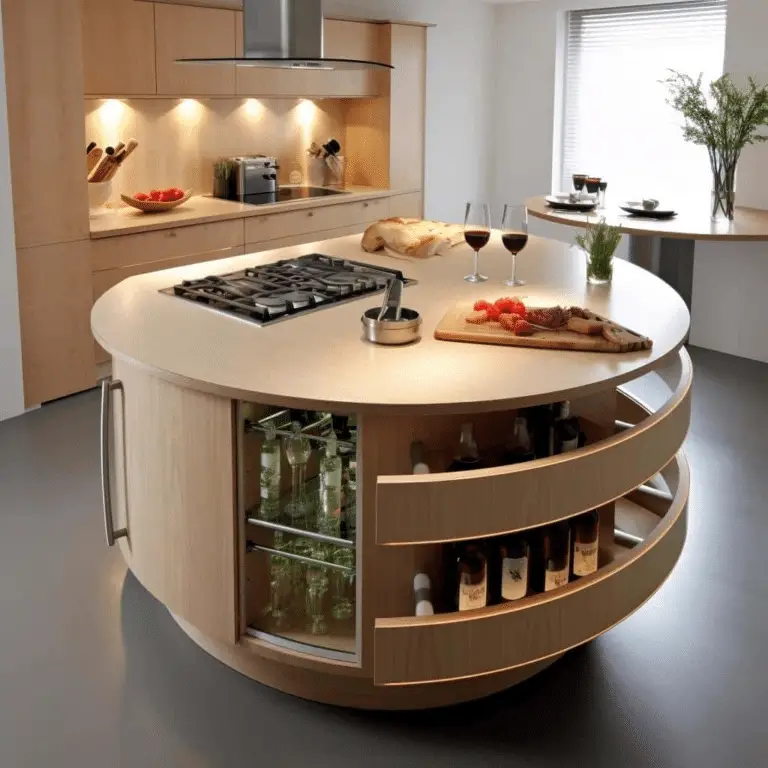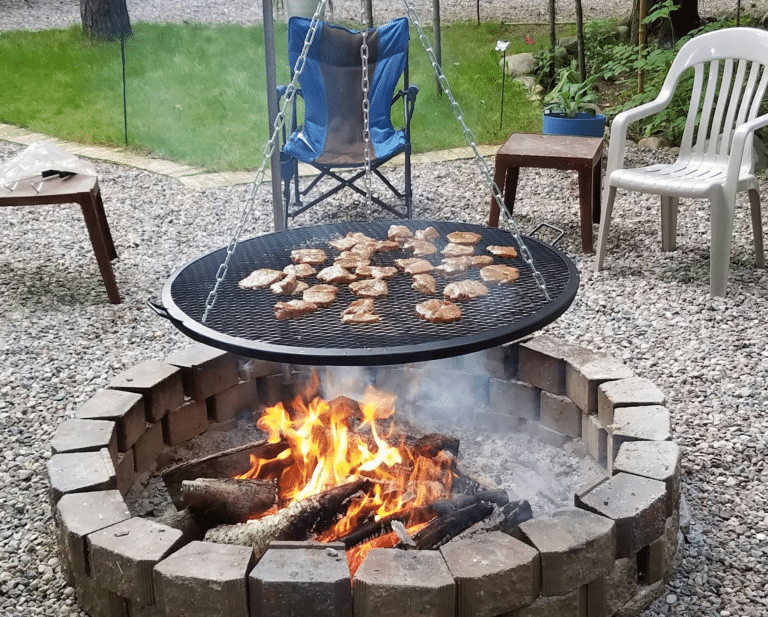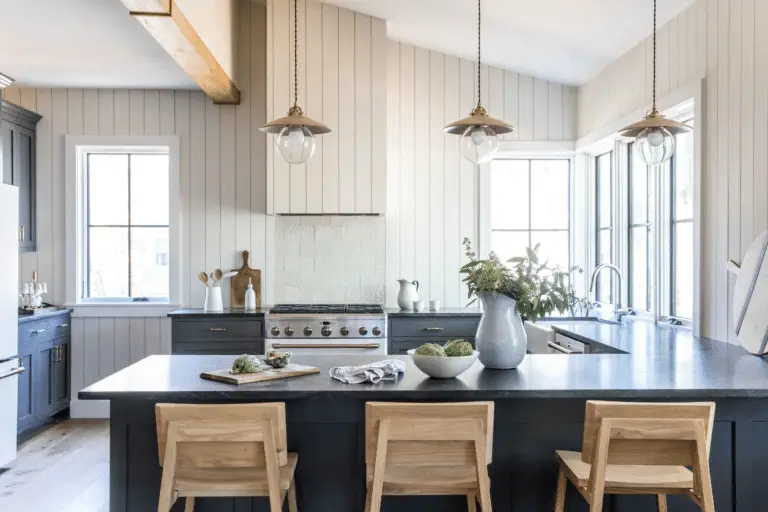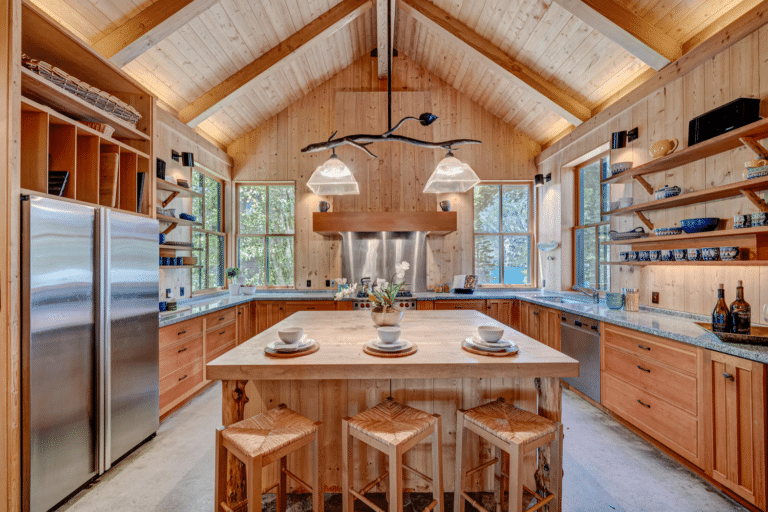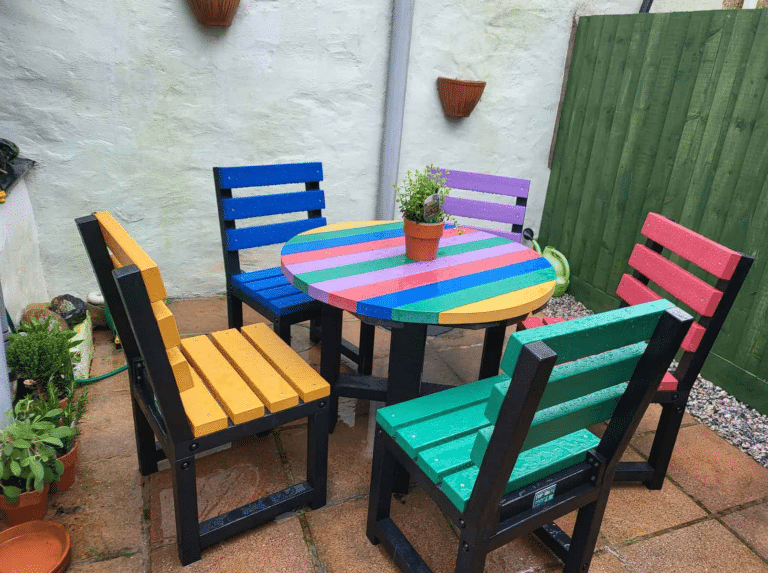Welcome to our enlightening guide on Lighting Ideas for Sloped Ceiling Kitchens! Ever puzzled over how to illuminate a kitchen with unique architectural features like a sloped ceiling? You’re in the right place. In this post, we’ll delve into how a sloped ceiling can impact your lighting choices and strategies.
We’ll shine a light on the importance of proper illumination, share top lighting ideas tailored for sloped ceilings, and provide handy installation tips. Plus, learn how to masterfully blend natural and artificial light to create a captivating ambiance in your kitchen. Ready to brighten up your culinary space with style and sophistication? Let’s dive in!
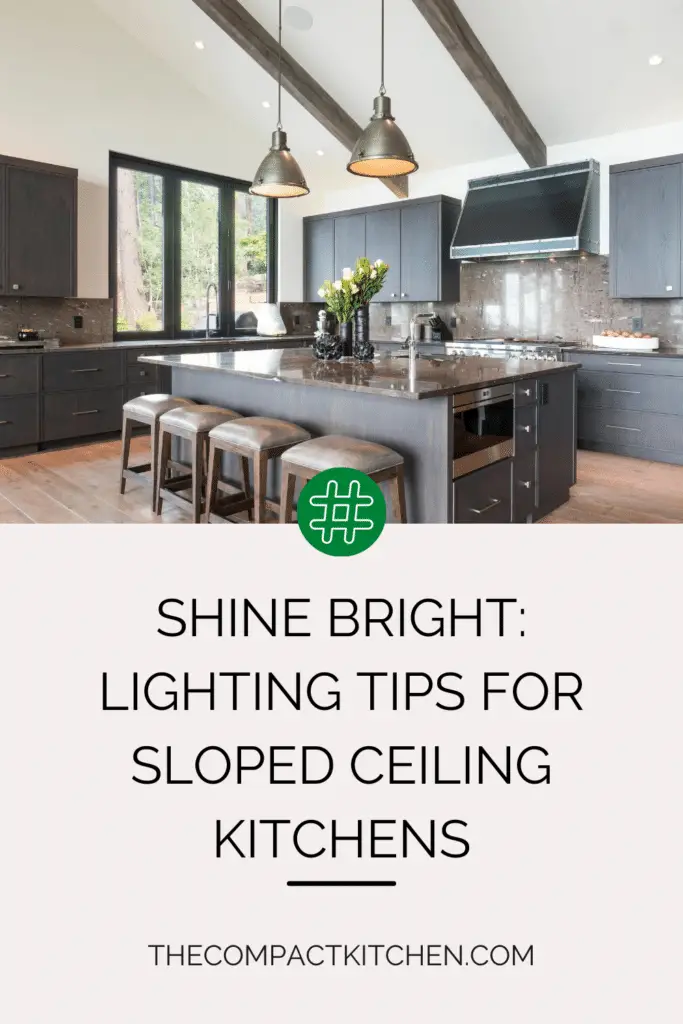
The Dynamics of a Sloped Ceiling Kitchen

When it comes to designing a kitchen with a sloped ceiling, it’s important to understand the unique architectural characteristics that come into play. Sloped ceilings can create a cozy and intimate atmosphere, but they also pose challenges when it comes to lighting. The slope of the ceiling can influence the way light is distributed throughout the space, affecting both the functionality and aesthetics of the kitchen.
Understanding the unique architectural characteristics of sloped ceilings
Sloped ceilings add a touch of character and uniqueness to a kitchen, but they can also make it tricky to find the right lighting solutions. The angle of the ceiling can create shadows and dark spots, making it necessary to carefully plan out the placement of lights to ensure even illumination.
How slope ceiling can influence kitchen’s lighting dynamics
The slope of the ceiling in a kitchen can affect how light is directed and dispersed. It’s important to consider the slope when choosing the type and placement of lighting fixtures to avoid glare or dimly lit areas. By understanding how the slope of the ceiling impacts the lighting dynamics, you can create a well-lit and inviting kitchen space.
The Importance of Proper Lighting

Proper lighting is essential in any kitchen space, but when it comes to sloped ceiling kitchens, it becomes even more crucial. The unique architectural characteristics of a sloped ceiling can create challenges when it comes to lighting, making it imperative to carefully consider the lighting design to ensure functionality and style.
Creating a Comfortable Environment
One of the key reasons why appropriate lighting is so important in a sloped ceiling kitchen is the impact it has on creating a comfortable and inviting environment. A well-lit space not only makes cooking and meal preparation easier but also enhances the overall ambiance of the room. By strategically placing lights in key areas, you can ensure that every corner of your kitchen is well-lit, making it a more pleasant space to spend time in.
Aesthetically Pleasing Design
In addition to functionality, lighting also plays a crucial role in the aesthetics of a sloped ceiling kitchen. The right lighting fixtures can enhance the architectural features of the ceiling, highlight design elements, and create a visually stunning space. Whether you opt for pendant lights to add a touch of elegance, recessed lights for a sleek and modern look, or track lights for flexibility in lighting control, choosing the appropriate lighting can elevate the style of your kitchen.

Consider combining different types of lighting to achieve a layered and multifunctional lighting scheme. For example, using under-cabinet lights can provide task lighting for food preparation, while pendant lights can add a decorative element and create ambiance. By incorporating a variety of lighting sources, you can achieve both functionality and style in your sloped ceiling kitchen.
Remember, lighting is not just about illuminating a space; it’s about creating a mood, enhancing the design, and making your kitchen a more enjoyable place to be.
The Top Lighting Ideas for Sloped Ceiling Kitchens
When it comes to lighting a kitchen with a sloped ceiling, it’s essential to consider the unique architectural characteristics of the space. The right lighting can transform your kitchen into a comfortable and aesthetically pleasing area for cooking and dining. Here are some top lighting ideas to help you make the most of your sloped ceiling kitchen:
Pendant Lights

Pendant lights are a popular choice for sloped ceiling kitchens as they can be easily adjusted to hang at the desired height. This type of lighting not only provides adequate illumination but also adds a touch of style to your kitchen. You can choose from a variety of designs and materials to complement your kitchen’s decor.
Recessed Lights

Recessed lights are another excellent option for sloped ceiling kitchens as they can be installed flush with the ceiling, creating a clean and streamlined look. These lights provide even illumination throughout the space and can be placed strategically to highlight specific areas such as countertops or cooking surfaces.
Track Lights

Track lights are ideal for sloped ceilings as they can be easily adjusted to direct light where it’s needed most. These lights are versatile and can be customized to suit your kitchen layout. Whether you want to brighten up a dark corner or create ambient lighting, track lights offer flexibility and functionality.
Under-Cabinet Lights

Under-cabinet lights are a practical lighting solution for sloped ceiling kitchens, especially in areas where overhead lighting may not be sufficient. These lights can be installed below cabinets to illuminate workspaces such as countertops and sinks. Under-cabinet lights are energy-efficient and can enhance the overall functionality of your kitchen.
Tips for Installing Lights in a Sloped Ceiling Kitchen
When it comes to lighting ideas for sloped ceiling kitchens, proper installation is key to achieving the right ambiance and functionality. Here are some tips to help you install lights in your sloped ceiling kitchen effectively:
1. Assess Your Sloped Ceiling
Before you start installing any lights, take a good look at your sloped ceiling and identify the best locations for placing fixtures. Consider the angle of the slope and where the natural light comes in to determine the areas that need additional artificial lighting.
2. Choose Appropriate Fixtures
Depending on the slope of your ceiling and the size of your kitchen, you may need specific types of fixtures to ensure proper lighting. Pendant lights can work well in sloped ceiling kitchens as they can be adjusted to hang at the right angle. Recessed lights, track lights, and under-cabinet lights are also great options for providing focused illumination in specific areas of the kitchen.
3. Follow Safety Precautions
When installing lights in a sloped ceiling, safety should always be a top priority. Make sure to turn off the power source before working with electrical fixtures. Use appropriate tools and equipment, and if you’re not comfortable with electrical work, it’s best to hire a professional electrician to do the installation for you.
4. Consider Professional Help
If you’re not confident in your DIY skills or if you have a complex sloped ceiling design, it’s worth investing in the expertise of a professional lighting designer or electrician. They can help you assess the best lighting solutions for your kitchen, recommend appropriate fixtures, and ensure that the installation is done correctly and safely.
By following these tips for installing lights in your sloped ceiling kitchen, you can create a well-lit space that is both functional and visually appealing. Remember to take into account the unique architectural characteristics of your sloped ceiling and choose lighting solutions that enhance the overall look and feel of your kitchen.
Using Natural Light in a Sloped Ceiling Kitchen

When it comes to lighting ideas for sloped ceiling kitchens, it’s essential to consider the benefits of incorporating natural light. Natural light not only enhances the overall look of your kitchen but also provides a sense of openness and airiness to the space. Let’s explore how you can maximize the benefits of natural light and integrate it with artificial lights for a balanced and effective lighting scheme.
Maximizing Natural Light

One of the key advantages of sloped ceilings is the potential to harness natural light. Skylights or large windows can be great additions to a sloped ceiling kitchen, allowing sunlight to flood the space and create a bright and inviting atmosphere. Consider the placement of your windows or skylights strategically to maximize the amount of natural light that enters your kitchen throughout the day.
Another way to enhance natural light in a sloped ceiling kitchen is by using light-reflecting surfaces such as mirrors or light-colored walls. These surfaces can help bounce natural light around the space, making it feel brighter and more spacious.
Integrating Artificial Lights
While natural light is a valuable asset in a sloped ceiling kitchen, it’s essential to complement it with artificial lights for optimal functionality, especially during darker hours. Pendant lights, recessed lights, track lights, or under-cabinet lights can be strategically placed to fill in any areas that may be lacking natural light.

Consider installing dimmer switches for artificial lights to adjust the intensity of the lighting based on the time of day or the mood you want to create in your kitchen. This flexibility allows you to transition seamlessly from bright task lighting for cooking to soft ambient lighting for dining or entertaining.
Creating a Balanced Lighting Scheme
When incorporating both natural and artificial lights in a sloped ceiling kitchen, aim for a balanced lighting scheme that provides adequate illumination for various tasks while maintaining an aesthetically pleasing ambiance. Layering different types of lighting – ambient, task, and accent – can help create depth and dimension in your kitchen.
Experiment with different combinations of natural and artificial lights to find the perfect balance that suits your needs and enhances the architectural characteristics of your sloped ceiling kitchen. Remember that the goal is to create a comfortable and inviting space where you can cook, dine, and entertain with ease.
Shedding Light on Sloped Ceiling Kitchen Illumination
As we wrap up, remember that lighting is key in enhancing the unique features of your sloped ceiling kitchen. From pendant lights to natural light, each choice plays a crucial role in creating a cozy and stylish cooking space.
So, don’t be afraid to mix and match different lighting ideas to find the perfect balance. With the right lighting setup, your sloped ceiling kitchen can truly shine!




